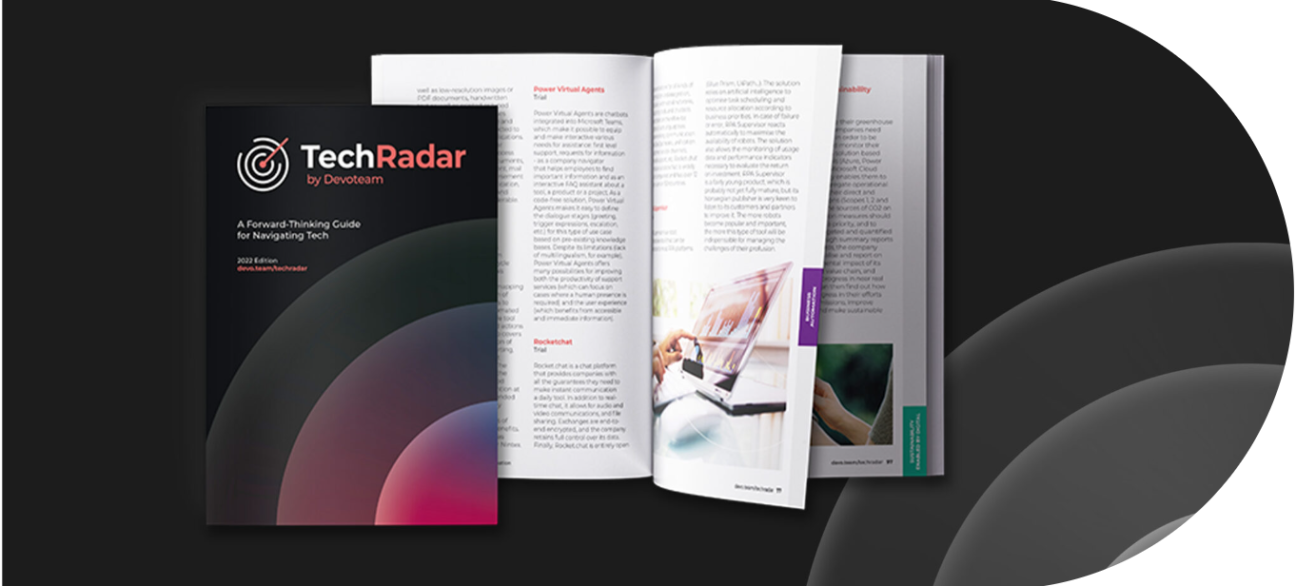
When it comes to successfully managing and scaling today’s increasingly complex IT environments, most DevOps and SRE (Site Reliability Engineering) teams would agree that it’s not about what you can do – it’s about what you can automate.
These days, automation is no longer simply a convenient option, but a business imperative that enables DevOps and SREs to increase efficiency by freeing up the time taken to complete tedious tasks manually, and focus their attention on tasks that add value to the organization.
Since its release in 2012, Ansible has rapidly grown as a leader in configuration management and automation, renowned for its simplicity, power, and versatility across a broad spectrum of automation challenges.
In this article, we’ll take a closer look at the technology behind Ansible, and explore some of the key capabilities and benefits that set it apart.
What is Ansible?
Acquired by RedHat in 2015, Ansible is an open-source automation and configuration tool, that leverages Infrastructure-as-Code (IaC) to handle configuration management, application deployment, cloud provisioning, network automation, multi-node orchestration and ad-hoc task execution to manage complex multi-tier deployments.
Often described as a “radically simple,” IT automation system, Ansible enables developers to replace complex scripting and time-intensive manual configuration management with an automated and repeatable process using the easy-to-learn YAML (Yet Another Markup Language) to describe automation tasks. At the same time, the tool is powerful enough to automate complex multi-tier IT application environments.
The community distribution of Ansible includes a set of powerful command-line binaries (also known and packaged as Ansible Core) that are supported on most operating systems with Python installed. The package also includes a number of independent Ansible collections curated by the community, as well as modules, plugins, and roles. It is a “batteries included” package and is free to use, download and modify – and the project benefits from thousands of contributors.
Red Hat Ansible Automation Platform 2 (AAP2) is a commercial, subscription-based product that provides lifecycle support for organizations looking to standardize, operationalize, and scale automation. The product includes numerous enterprise features, upstream components and certified Ansible collections from over 60 partners. The main difference between Ansible upstream open-source projects and the Red Hat Ansible Automation Platform is the target audience.
How does Ansible work?
Red Hat Ansible Automation Platform 2 is a hardened and tested enterprise product and it combines more than a dozen upstream projects into an integrated, streamlined product. For example, the automation controller is the WebUI and API for Ansible automation, which is based on the upstream project AWX. This component acts as a single connection and integration point for automation and enables distributed execution using an automation mesh. (The automation mesh increases scalability and distributes the load across multiple execution nodes, improving reliability due to reduced susceptibility to latency and connection interruptions.) It allows execution nodes with automation execution environments to be placed in different locations closer to the managed nodes or target devices, reducing latency and enabling automation for IoT edge use cases e.g., network edge devices, IoT device endpoints, etc.
Ansible doesn’t require the use of any agents. That means it can reach managed nodes without a need to install anything. To do so, Ansible uses native remote access solutions that are provided by the managed node. On Linux, remote access is realized by using SSH (Secure Socket Shell, a network protocol); on Windows, it is realized by using Windows Remote Management (WinRM); and on network devices, it can be provided by using SSH or API access.
To configure the managed nodes, Ansible uses playbooks written in YAML, which can be reused as needed, further simplifying configuration management and multi-machine deployment. For instance, users who need to execute a task with Ansible more than once, will simply write a playbook and put it under source control. They can then use the playbook to push out new configurations or confirm the configuration of remote systems.
What makes Ansible different from other configuration tools?
Given the undeniable efficiency and productivity benefits that automation offers, it’s no surprise that a robust market of IT automation and configuration tools is available – so what makes Ansible different?
Here are 3 differentiators that set Ansible apart:
- Simplicity. Arguably, Ansible’s greatest strength (and the reason why it is so appealing to developers and admins) is its simplicity. Ansible was designed to increase automation accessibility by utilizing YAML, a human-readable language commonly used by most engineers to easily describe automation jobs. Furthermore, unlike other configuration tools, Ansible is agentless and uses no additional custom security infrastructure, making it easy to deploy. It also reduces the resources needed to manage IT by enabling system admins to contain hundreds or even thousands of machines from a single point.
- Scalability. Tasks can be automated by any automation software, however, when dozens or hundreds of scripts are managed by just a few individuals maintainability and scalability are compromised. With Ansible, users can create automation playbooks that can be saved, shared, and reused as needed throughout the entire enterprise. This provides an opportunity to leverage the automation content already created within the organization. Ansible also enables customers to bridge traditional and cloud-native infrastructure effectively, eliminating multiple-point solutions, organizational silos, and islands of automations. In essence, Ansible enables the ability to automate across all IT infrastructure and many different IT vendor solutions.
- Versatility. Ansible’s ease of use and dedicated community has contributed to the development of playbooks that can tackle a diverse range of use cases, making it one of the more versatile tools available. For example, Ansible can automate configuration on numerous different levels including operating systems and application components and can be applied to different types of equipment (servers, storage, networks) or infrastructures (virtual, cloud, bare metal), making it an ideal tool to manage modern IT infrastructure.
What are the key features of Ansible?
Ansible helps developers and system admin streamline automation and configuration management across the entire enterprise by supporting 6 key use cases:
- Configuration Management
Ansible started as a solution for configuration management and that is still a major use case. In configuration management, Ansible is used to manage configuration files, install software, create users, and perform similar tasks to guarantee that the managed systems all are in the desired state. - Application Deployment
Ansible provides a more consistent way to deploy middleware and applications across the infrastructure, enabling multi-tier applications to be deployed using a single framework. Using Ansible, developers can configure key services and push application files using one common system. Furthermore, Ansible eliminates the need to write custom code to automate systems and enables users to instead write simple task descriptions making it easier for less technically experienced team members to utilize, understand, and adapt to changes over time. - Network Automation
Despite the evolution of underlying technologies, network management has remained largely a manual process for years. Yet while rapidly changing workload requirements demand rapid network configuration and updates, traditional approaches are generally inefficient and error-prone. With Ansible, network administrators and teams can reap the benefits of agentless automation to configure network stacks, test and validate existing network state, discover network configuration drift and make corrections, in addition to other operational benefits such as enhanced security, compliance, and delegation through Role-Based Access Control (RBAC) and Single Sign-On (SSO). - Orchestration
In much the same way a musical conductor brings notes produced by different instruments into one cohesive piece, orchestration involves bringing many different elements to run the full operation. Orchestration addresses the requirement to provision environments at a higher level than configuration management. The focus here is on coordinating configuration across multiple IT domains and complex environments. With Ansible, users have access to automated workflows, provisioning, and more to make orchestrating tasks quick and easy. - Security Automation
Designed to help organizations better assess risks, remediate issues, and develop compliance workflows, Ansible security automation offers new modules to integrate and orchestrate numerous classes of security solutions including enterprise firewalls, intrusion detection systems (IDS), security information and event management (SIEM), and security orchestration and automated response (SOAR) solutions to enable organizations to better unify responses to cyberattacks. - Cloud Provisioning
Automating any application’s life cycle begins with automating the provisioning of its infrastructure. With Ansible, users can provision cloud platforms, virtualized hosts, network devices, and bare-metal servers. For example, after bootstrapping, nodes can be connected to storage, added to a load balancer, security patched, or any number of other operational tasks. Ansible supports automation from the provisioning phase to the holistic configuration of the applications that run on top of the cloud resources.
Is Ansible the right solution for your business?
In today’s rapidly evolving business landscape, it is more important than ever for organizations undergoing modernization and digital transformation to embrace automation as a crucial business imperative.
Ansible empowers organizations to build, run and manage automation solutions for traditional systems and new hybrid/multi-cloud infrastructures, retaining control over deployments and expanding the scope of automation. For organizations looking for a simplified approach to automating dynamic platforms that enable speed, scalability, and stability across the IT infrastructure – Ansible is the right solution.
How can I learn more?
This article is part of a larger series focusing on the technologies and topics found in the first edition of the TechRadar by Devoteam . To see what our community of tech leaders said about the current position of Ansible in the market, take a look at the most recent edition of the TechRadar by Devoteam .

Want to know more about Ansible?
Check out TechRadar by Devoteam to see what our experts say about its viability in the market.